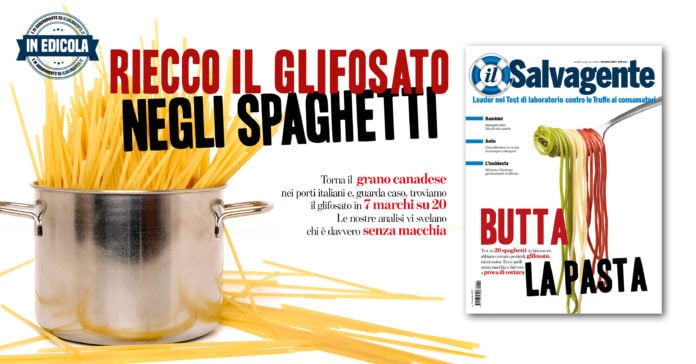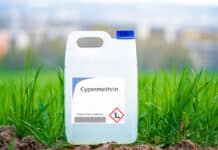
Canadian wheat and glyphosate are back in Italian pasta. In our September issue we used data from the Italian National Institute of Statistics ISTAT to show how by the end of 2020 imports of durum wheat from Canada will once again reach 2016 levels, with a record amount of 1.1 billion kilos of the 2.5 billion kilos imported from abroad this year coming from the country.
In our new issue – in newsstands today – we publish a laboratory analysis of 20 brands of spaghetti, the results of which lead us to hypothesise that this imported wheat ends up on our plates, along with the herbicide that the International Agency for Research on Cancer considers a probable carcinogenic: in seven products we found traces of glyphosate and in six (Divella, Esselunga, Eurospin, Garofalo, Lidl and Rummo) the wheat also came from non-European countries.
Was it from Canada? Although we strongly suspect that this was the case in some of the pasta samples, we can’t be sure because labelling legislation allows companies to generically indicate “EU” and/or “non-EU” origin.
Glyphosate does not come exclusively from abroad, however, as was demonstrated by the concentration – albeit minimal and below legal limits, as in the case of the other samples – found in Agnesi spaghetti made with 100% Italian wheat.
This well-known herbicide wasn’t the only contaminant we looked for in the pastas but it was the one we found most frequently in the samples we analysed, to a degree that even exceeded the previous test (in November 2018): on that occasion we only found glyphosate in two brands of pasta (Eurospin and Lidl). Those were different times, however: between 2016 and 2018 there had been widespread discussion of the risks glyphosate posed to health, and consumers had begun to change their purchasing habits. Under this pressure, companies rerouted their supply ships, and in 2018, just 100 million kilos of flour arrived from Canada. Today the estimate is of well over one billion kilos. An amount which is certain to have an effect.
The Neglected Risks of Glyphosate
In addition to the probable risk of carcinogenicity identified by the International Cancer Agency, there are many questions about the safety of glyphosate, even when it is present only in very low doses.
One recent study by researchers at the University of Turku in Finland and published in the journal ScienceDaily found that 54% of human intestinal bacterial species are potentially sensitive to even small amounts of glyphosate. Obviously, this means that its effects on the human microbiota – the population of 500 different species of bacteria that live in our gut – could be extremely serious and have grave repercussions for health, especially for those of us who eat a lot of pasta.
Furthermore, there is a worrying body of evidence that glyphosate affects our endocrine system. In an article published in the journal Chemosphere titled “Glyphosate and the key features of an endocrine disruptor: A review,” a trio of scientists concluded that glyphosate appears to possess eight out of ten of the key characteristics associated with endocrine-disrupting chemicals. Not only that, the same study also found that chronic exposure to low doses of the herbicide can have an impact on ovarian function, a conclusion also reached by an earlier study by the Ramazzini institute.
Not Spaghetti for Kids
In addition to pesticides we looked for the mycotoxin Deoxynivalenol known as Don, the “vomitoxin” which is particularly dangerous for children: all the samples were below the legal limit for adults (750 mcg/kg) even though in three cases – Garofalo, Agnesi and Lidl – concentrations exceeded the defined limit for children under three years of age (200 mcg/kg): although these pastas are not strictly for children, and are therefore not forced to respect this stricter limit, we think it would be wise to avoid feeding them to little ones.
The Proof is in the Pudding: Lies About Cooking Times
Our test concluded with cooking and aroma and flavour tests: firstly, we checked whether the times indicated on the packets were sufficient for cooking the spaghetti in an optimal way. The results were disappointing: the cooking time indicated was found to be correct in only 3 out of 20 cases. In the other samples the cooking time suggested by the manufacturers was too short by one or two minutes. Our advice? Ignore the suggested cooking time and try the pasta before you drain it.
© All rights reserved
To discover the results and see which pastas came off best in the test, buy the new issue of Salvagente.







